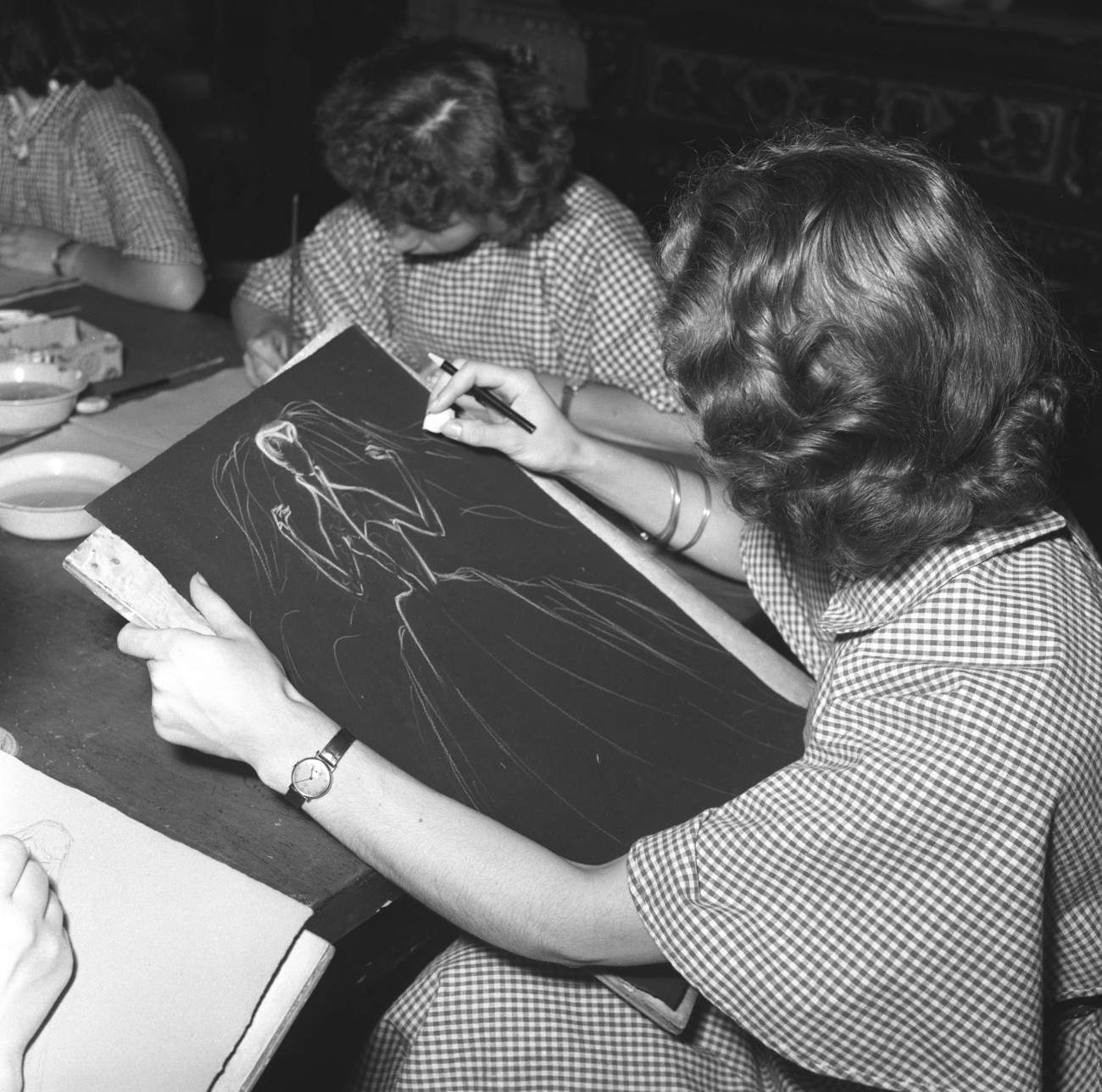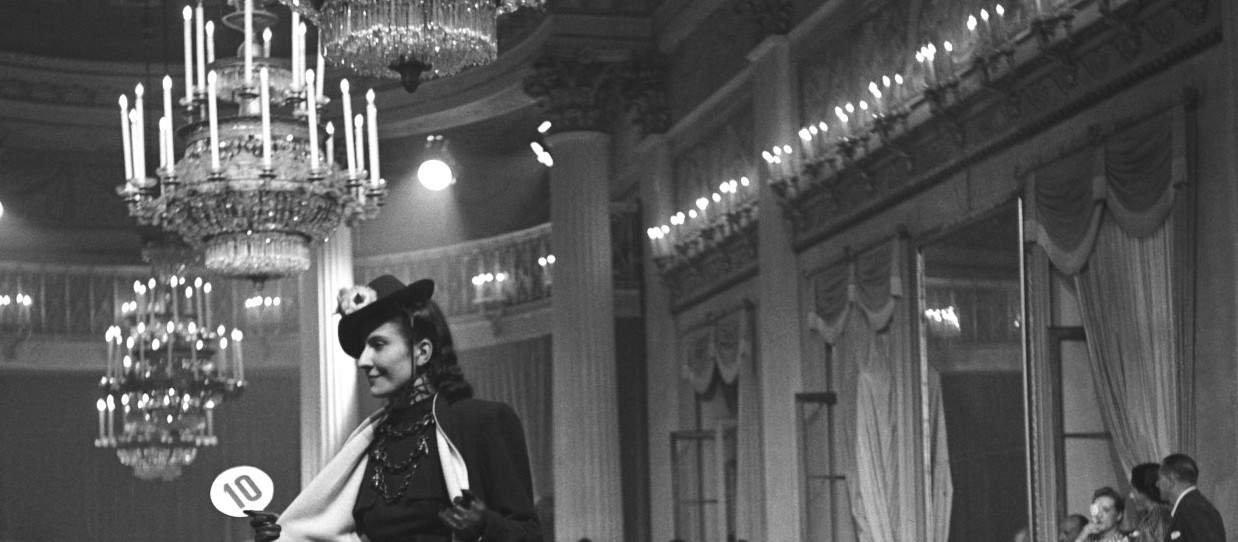From June 18 to September 28, 2025, the Museum of Fashion and Costume at Palazzo Pitti in Florence is hosting the exhibition Fashion in Light 1925-1955. At the Origins of Made in Italy, curated by Fabiana Giacomotti, organized by Archivio Luce Cinecittà in collaboration with the Uffizi Galleries, and promoted by the Ministry of Culture.
The exhibition aims to retrace three crucial decades in the history of Italian fashion, preceding its recognition on an international scale. Through more than fifty pieces including clothes, accessories, images and films, the exhibition path reconstructs how, even before the famous fashion show in the Sala Bianca in 1952, Italian fashion was taking shape thanks to innovations in fabrics, stylistic research, craftsmanship and commercial strategies.
The narrative, which unfolds between 1925 and 1955, interweaves little-known events with legendary names to offer an original perspective on the origins of Made in Italy. The beating heart of the exhibition is the heritage of the Luce Archives, with a selection of photographs and films, many of which are being shown to the public for the first time.
The garments on display come both from important museums, including the Boncompagni Ludovisi Museums and Palazzo Madama, and from corporate archives and private collections. Also present are creations by historic maisons, some now defunct, such as Ventura, Radice, Tortonese/La Merveilleuse, Gandini, Montorsi, Villa, Fontana, Palmer, Biki and Carosa, alongside such notable names as Maria Monaci Gallenga, Fortuny, Simonetta Visconti and a very rare garment signed by Baroness Gallotti, known as “the Island Weaver.”
There is no shortage of names that are still famous today but were already active in the period, including Gucci, which presents its very first evening bag from the 1920s, never exhibited before, Salvatore Ferragamo with its famous “invisible” sandal from 1947, and Emilio Pucci, present with its first creations still labeled “Emilio.” Also valuable are the archival materials on display: fabric catalogs, certificates of “Italian-ness” and rare books help to offer a rich and original view of the evolution of Italian fashion.
The exhibition also includes numerous unpublished works from the 1940s and 1950s by major signatures in both filmmaking and sound such as Romolo Marcellini and Roman Vlad. Prominent among the works featured is the restored version of the 1948 documentary “Seven Reeds for a Dress,” directed by Michelangelo Antonioni. In addition, the presence of numerous foreign footage alternating with Italian footage makes it possible to outline a new narrative also of the relationships between Italian, French and American fashion, before and after World War II.
Fashion in Light not only celebrates Made in Italy, but also wants to invite reflection on the evolution of taste, visual aesthetics and the dynamics of the national fashion system. The installation within the Museum of Fashion and Costume reinforces a narrative that aims to leave a critical and lasting imprint on the understanding of Italian creativity.



“The genesis of Italian fashion reflects the history of the country. It is a narrative with several voices and between different centers: Venice, where the first collective fashion show of Italian and French fashion was held in 1926, almost at the same time as Milan, and then Turin, where the Ente Nazionale della Moda was born in 1935,” the curator explained. “After World War II and until the formation of a first national ”fashion system“ thanks to Giovanni Battista Giorgini’s project and the establishment of the myth of the White Room, for a five-year period Italian cities fought for supremacy in a rapidly expanding sector. This exhibition, which presents for the first time a reasoned selection of the Istituto Luce’s immense film, photographic and documentary holdings, some of which have never been seen before, as well as fifty garments and accessories from legendary and largely vanished fashion houses, aims to recount the evolution of Italian style during the thirty years in which its critical and historical consciousness was formed, its pride of belonging was consolidated, and its textile industry and supply chain were wise and built, according to a model that has remained unique in the world.”
“This exhibition allows, through a highly selected florilegium of photographs and videos, not only to reconstruct an important moment in the history of fashion, but also to place the clothes in a context that brings them alive because the support of ’newsreels’ and the image as a documentary medium contributes like nothing else to understanding the social function of clothing beyond its aesthetic appearance,” said Uffizi Galleries Director Simone Verde.
“With this exhibition project, hosted in one of the cities that most tell the world about the exceptional nature and greatness of Italian creativity and art, we intend to highlight one of its greatest expressions, fashion,” said Lucia Borgonzoni, Undersecretary of State at the Ministry of Culture. “The exhibition is proposed as an original historical cross-section on the evolution and affirmation of a sector that has always been synonymous with visionary and that unique achievements resulting from skilled hands have made and still make the flagship of Made in Italy. A national heritage whose importance is well known to the Ministry, which to support its development has put in place a broad strategy that rests on interventions and financial tools aimed at increasing its value. Heritage of which the Luce Archives holds precious pages, which as a Ministry we have the duty not only to preserve but also to promote in order to hand it down in all its extraordinariness to future generations.”
“The materials of the Luce Archives constitute the visual and narrative heart of this exhibition,” says Cinecittà President Chiara Sbarigia. “Through films, photographs and newsreels, a mosaic of collective memory is reassembled that tells us about textile experimentation, fashion shows held as early as the 1920s and the growing importance of Italian industry in the processing of silk, viscose in the 1930s and Lanital in the 1940s. Thus emerge the innovations of the fashion industry, the links with Hollywood cinema and the crucial role of so many figures-women and men-who, through dress, promoted an idea of Italy as modern, creative and open to international dialogue. Moda in Luce makes clear how the history of Italian fashion is rooted in an articulated process that the Istituto Luce,” concludes President Sbarigia, "has had the merit, and the responsibility, to follow step by step, recounting its ambitions, contradictions and goals.
A catalog published by Silvana Editoriale accompanies the exhibition.



 |
| Florence, the Museum of Fashion and Costume traces three decades of Italian fashion history |
Warning: the translation into English of the original Italian article was created using automatic tools. We undertake to review all articles, but we do not guarantee the total absence of inaccuracies in the translation due to the program. You can find the original by clicking on the ITA button. If you find any mistake,please contact us.